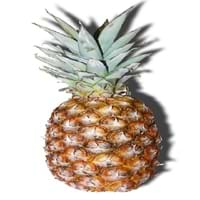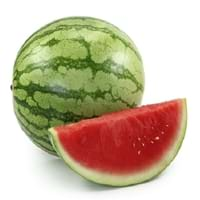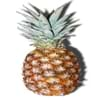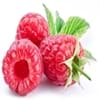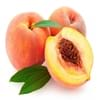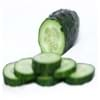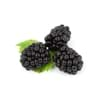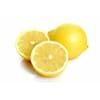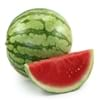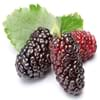Health Benefits
Asthma treatment, Bronchitis treatment, Cancer prevention, Heart care, Increases metabolic rate
Anti-aging benefits, Anti-inflammatory properties, Asthma treatment, Body hydration, Cancer prevention, Digestive aid, Skin cleansing, Skin rejuvenation
General Benefits
Anti-inflammatory properties, Controls blood pressure, Digestive aid, Eye care, Healing of wounds, Maintains healthy cholesterol level, Strengthens bones, Treatment of sinusitis, Treatment of common cold
Anti-inflammatory properties, Body hydration, Controls blood pressure, Digestive aid, Maintains healthy cholesterol level
Skin Benefits
Anti-aging benefits, Brightens and lightens complexion, Skin cleansing, Treatment of acne, Treatment of dark spots
Anti-aging benefits, Brightens and lightens complexion, Hydrates skin
Hair Benefits
Prevents hair loss
Promotes longer and healthier hair, Regulates hair growth
Allergy Symptoms
Abdominal pains, Itching in tongue and other parts of mouth, Sneezing, Swelling, Tingling sensation in wrist and face, Vomiting, Wheezing
Breathing difficulty, Decrease in blood pressure, Dizziness, Eczema, Hives, Runny nose, Swelling of mouth, tongue or lips, Watery eyes
Side Effects
Causes swollen mouth, Allergic reaction, Diarrhoea, Nausea, Skin rash, Vomiting
Allergic reaction, Bloating, Diarrhoea, Indigestion, Intestinal gas, Nausea, Vomiting
Best Time to Eat
Best if taken as a breakfast (or empty stomach), As a snack in the late afternoon, Eat the fresh ones, avoid mixing with any other foods, don't eat after meal., Morning time (before lunch)
As a snack in the late afternoon, Don't consume at night and before bed, Eat the fresh ones, avoid mixing with any other foods, don't eat after meal., Strictly avoid empty stomach
Vitamin B5 (Pantothenic Acid)
Vitamin C (Ascorbic Acid)
Vitamin K (Phyllochinone)
Calories in Fresh Fruit with Peel
Not Available
Not Available
Calories in Fresh Fruit without Peel
Calories in Frozen Form
Not Available
Calories in Canned Form
Not Available
Type
Berry, Tropical
Berry, Melon
Varieties
Smooth Cayenne, Abacaxi, Red Spanish and Queen
Sugar Baby, Sangria, Golden Midget, Starlight, Jubilee, Starbrite, Extazy, Stars 'n' Stripes, Mickylee, Yellow Baby, Yellow Doll, Little Baby Flower, Sweet Favorite and Cream of Saskatchewan
Color
Yellow
Canary yellow, Coral red, Orange, Salmon yellow, Scarlet red, White
Taste
Strong, Sweet, Tart
Sweet
Origin
Central America, South America
Southern Africa
Grows on
Not Available
Vines
Soil Type
Clay, Sandy loam, Well-drained
Sandy, Well-drained
Climatic Conditions
Hot, Sunny
Dry, Hot
Facts about
- A single pineapple takes 3 years to reach maturation.
- Pineapple is not an apple, but is actually a berry.
- The name is with reference to its resemblance to pine cones.
- Pineapple is sweeter if scales are more.
- Watermelon contain 91% of water.
- In Japan & Chine, watermelon is a popular gift to bring a host.
- Entire watermelon is edible, even the rinds & seeds.
- There are more than 1200 varieties grown in the world.
Top Producer
Costa Rica
China
Other Countries
Brazil, India, Philippines, Thailand
Algeria, Brazil, Egypt, Iran, Kazakhstan, Mexico, Spain, Turkey, United States of America
Top Importer
United States of America
Germany
Top Exporter
Costa Rica
China
Botanical Name
Ananas comosus
Citrullus Lanatus
Synonym
Ananas sativus
Citrullus vulgaris
Subkingdom
Tracheobionta
Tracheobionta
Division
Magnoliophyta
Magnoliophyta
Class
Liliopsida
Magnoliopsida
Subclass
Commelinidae
Dillenhidae
Order
Poales
Cucurbitales
Family
Bromeliaceae
Cucurbitaceae
Species
A. comosus
C. lanatus
Generic Group
Pineapple
Gourd
Difference Between Pineapple and Watermelon
We might think that Pineapple and Watermelon are similar with respect to nutritional value and health benefits. But the nutrient content of both fruits is different. Pineapple and Watermelon Facts such as their taste, shape, color, and size are also distinct. The difference between Pineapple and Watermelon is explained here.
The amount of calories in 100 gm of fresh Pineapple and Watermelon with peel is Not Available and Not Available and the amount of calories without peel is 50.00 kcal and 30.00 kcal respectively. Thus, Pineapple and Watermelon belong to Low Calorie Fruits and Low Calorie Fruits category.These fruits might or might not differ with respect to their scientific classification. The order of Pineapple and Watermelon is Poales and Cucurbitales respectively. Pineapple belongs to Bromeliaceae family and Watermelon belongs to Cucurbitaceae family. Pineapple belongs to Ananas genus of A. comosus species and Watermelon belongs to Citrullus genus of C. lanatus species. Beings plants, both fruits belong to Plantae Kingdom.
